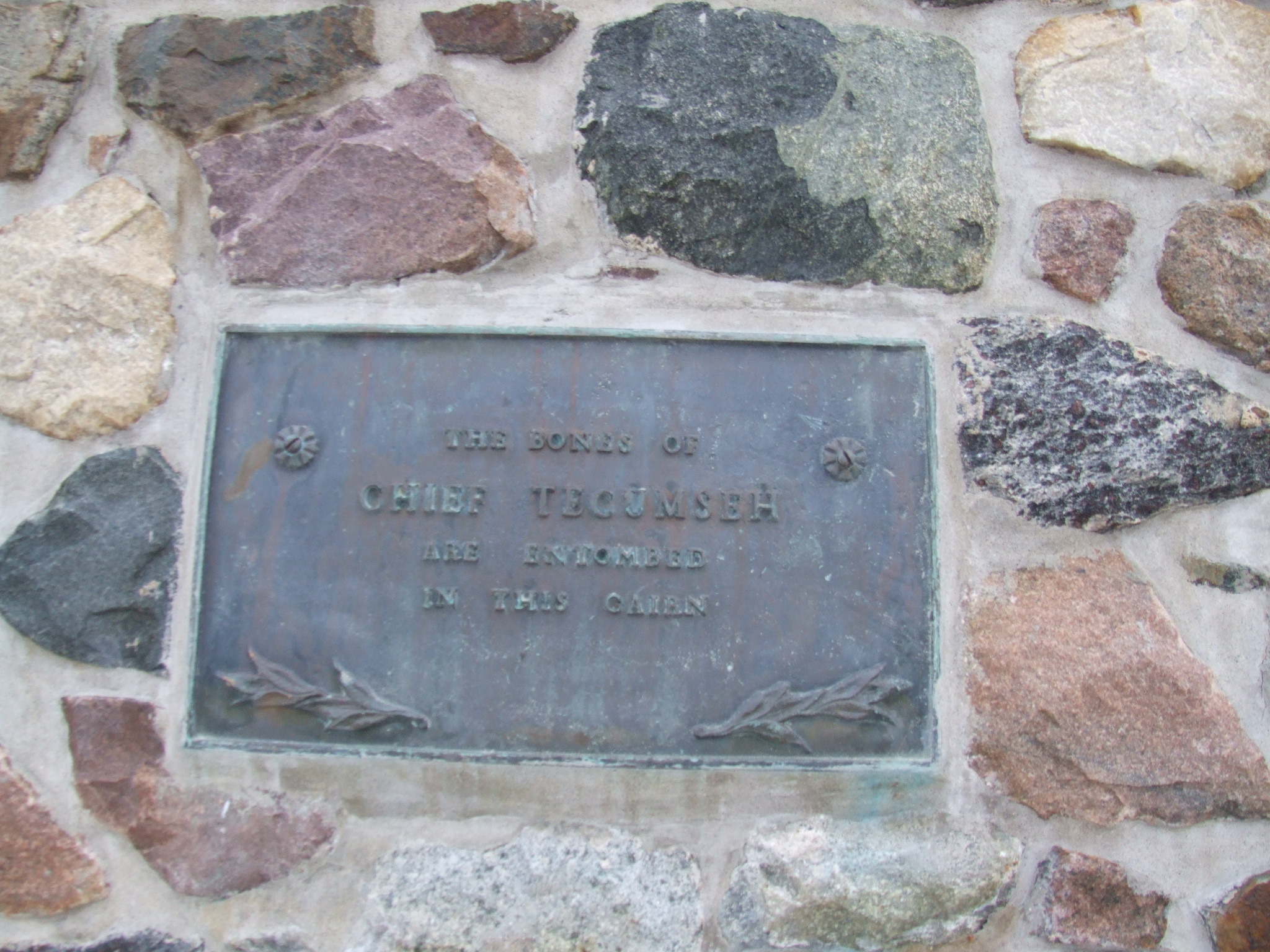Chief Tecumseh (Chief Tecumseh)

Early 19th Century Native American Leader. He is remembered as the chief of a large tribal Native American confederacy which opposed the United States during Tecumseh’s War (the conflict between the US and Native Americans in the area of the Northwest Territory from about 1809 to late 1811) and the War of 1812. It is believed he was been born along the Scioto River, near the present-day city of Chillicothe, Ohio, or in another village the Shawnee Kispoko tribe had erected not far away, along a small tributary stream of the Scioto, where his family moved just before or not long after his birth. When he was a boy, his father Puckshinwa, a minor Shawnee Kispoko war chief, was killed by white frontiersmen who had crossed onto Indian land in violation of a treaty, at the Battle of Point Pleasant in present-day West Virginia during Lord Dunmore’s War in 1774. The Shawnee were military allies with the British during the American Revolutionary War and repeatedly battled the Americans. Following his father’s death, his family moved back to Chief Blackfish’s nearby village of Chillicothe. The town was destroyed in 1779 by Kentucky militia in reprisal for Blackfish’s attack on famed frontiersman Daniel Boone’s settlement of Boonesburough, Kentucky. His family then fled to another nearby Kispoko village, but it was destroyed in 1780 by forces under the command of George Rogers Clark. The family moved a third time to the village of Sanding Stone, which was attacked again by Clark in November 1782, and the family moved to a new Shawnee settlement near modern Bellefontaine, Ohio. Around the age of 15, he joined a band of Shawnee who were determined to stop the white invasion of their lands by attacking settlers’ flatboats traveling down the Ohio River from Pennsylvania. For a while, these raids were so effective that river traffic virtually ceased. In early 1789 he traveled south with his older brother Cheeseekau and a small band of Shawnee warriors to live among, and fight alongside, the Chickamauga faction of the Cherokee. There he met Dragging Canoe, a was chief leader who was leading a resistance movement against US expansion. Cheeseekau was killed while leading a raid, and Tecumseh assumed leadership of the small Shawnee band, and subsequent Chickamauga raiding parties. In 1790 he returned to the Ohio territory and participated in several battles, including Fallen Timbers in 1794, in which the Native Americans were defeated by General Anthony Wayne’s American forces, which ended the Northwestern Indian Wars. He eventually settled in what is now Greenville, Ohio, the home of his younger brother Lalawethika, who would later take the new name of Tenskwatawa and became known as “The Prophet.” A religious leader, he advocated a return of the Shawnee and other American Indians to their ancestral lifestyle and rejection of the colonists and Americans. Around 1808, Tecumseh relocated with “The Prophet” near the confluences of the Wabash and Tippecanoe Rivers, near present-day Battle Ground, Indiana, and established the village of Prophetstown. “The Prophet’s” religious teachings became more widely known, as did his predictions on the coming doom of the Americans, and it attracted numerous members of other tribes to Prophetstown. They formed the basis of a sizeable confederacy of tribes in the southwestern Great Lakes region and Tecumseh emerged as the primary leader of this confederation. In September 1809, William Henry Harrison, governor of the newly formed Indiana Territory, negotiated the Treaty of Fort Wayne in which a delegation of Native Americans ceded 3 million acres of their lands to the US. Tecumseh opposed this and in August 1810 he led 400 armed warriors to confront Harrison at his home in Vincennes, Indiana, and demand the treaty be overturned, which Harrison refused to do. He met with Harrison again in 1811 without any resolution and he travelled south to recruit allies among the Five Civilized Tribes consisting of the Cherokee, Chickasaw, Choctaw, Creek, and Seminole. Harrison sensed that war was imminent and decided to strike first. On September 26, 1811 he led a force of 1,000 trained soldiers to Prophetstown and early on November 7th, the Native Americans launched a sneak attack. Harrison’s forces prevailed and they won the battle and destroyed the village. In spite of this setback, Tecumseh rallied his confederacy and joined up with British forces at the beginning of the War of 1812. He teamed with British Major General Sir Isaac Brock in the Siege of Detroit, helping to force the city’s surrender in August 1812. In the summer of 1813, with the American Naval victory on Lake Erie and Harrison’s successful defense of Fort Miegs, the British found themselves in an indefensible position and withdrew from Detroit. Harrison continued to pursue the British forces and their Native American allies into Canada and on October 5, 1813, he defeated them at the Battle of the Thames, near Moraviantown, in the present-day Canadian province of Ontario. Tecumseh was killed, and shortly after the battle, most tribes of his confederacy surrendered to Harrison at Detroit. Several in Harrison’s army claimed to have killed him, including Col. Richard Mentor Johnson of the Kentucky Mounted Rifles, and this fame helped him be elected to the US vice presidency in 1837. The exact location of his grave is unknown. (bio by: William Bjornstad)
Born
- March, 08, 1768
- USA
Died
- October, 10, 1813
- Canada
Cemetery
- Tecumseh Cairn
- Ontario
- Canada

